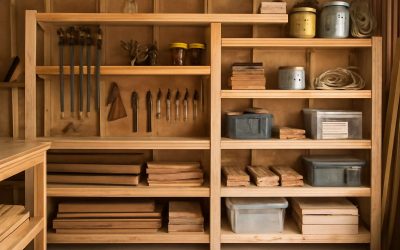
Whether you own a small warehouse or manage a massive distribution center, implementing a well-organized storage system will boost productivity and efficiency. However, there are so many different types of storage systems that it can be confusing for facility managers to decide which solution is best for their operations. For example, the difference between racking and shelving may seem obvious to those familiar with industrial storage systems, but to the general public, it may not be. Choosing the right commercial shelving and racking in Vancouver will depend on several factors, including your product types and sizes, delivery frequency, inventory management criteria, and warehouse space.
Shelving is an effective storage method for smaller products and lightweight materials that can be maneuvered by hand. For heavier and larger items, a racking system will be more suitable to store your products. Racking generally spans wider spaces, is deeper, and stacked higher than shelves. Racking is usually set up in several bays to accommodate a greater number of pallets, making it easy for a forklift or mechanized system to access the goods.
When choosing a racking system, the first thing you will need to examine is your company’s specific product line and its density, weight, delivery frequency, and shelf life. Once you know these details, it will be easier to find the ideal racking system for your products. If you have a wide range of products, a drive-on pallet racking system will probably be the best option for you. This type of racking allows you to stack pallets in multiple rows and provides quick processing speed.
On the other hand, if you have a large inventory of low-selectivity goods, selective pallet racking is an excellent choice for your warehouse. This type of racking offers more flexibility and reduces the need for costly adjustments as you grow your business.
Another important factor to consider is the number of pallets you will need to store in your facility. If you are storing food products, for example, you will need to meet FDA compliance standards for cold warehousing environments. You will also need to consider the dimensions of your building’s support columns to ensure the maximum height of uprights and beam levels.
For longer, over-dimensional products like timber, rolled carpeting, bar stock, metal tubing and pipe, and sheets of plasterboard, cantilever racking is an excellent alternative to traditional racking methods. Using this storage system will allow you to maximize your warehouse space and keep these items off the floor, where they are more susceptible to damage by forklift collisions or dust. This will also help your staff avoid injuries from repetitive bending and reaching.



0 Comments